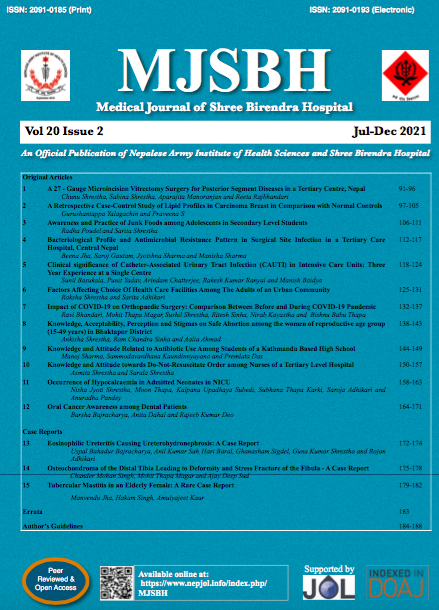Clinical significance of Catheter-Associated Urinary Tract Infection (CAUTI) in Intensive Care Units: Three Year Experience at a Single Centre
Keywords:
Key words: Biofilm; Health Care Acquired Infection (HCAI); Intensive care units (ICU)Abstract
Introduction: Catheter Acquired Urinary Tract Infection (CAUTI) is one of the most common Health Care Acquired Infections (HCAI); most of these infections are attributable to use of an indwelling urethral catheter. The aim of this study was to investigate patients with catheter-associated urinary tract infection over three years at a single hospital’s Intensive Care Unit (ICU) and to identify meaningful risk factors and causative organisms.
Methods: A retrograde analysis was performed on patients with indwelling catheters in ICU of Armed Forces Medical College, Pune, India. CAUTI was defined as isolated bacterial growth of 100,000 colony-forming units or more either 48 hours after transfer to the ICU if a urinary catheter was placed before the transfer or 48 hours after insertion if the catheter was inserted in the ICU. Only the patients whose culture results were negative before ICU admission were included.
Result: Among 350 samples collected in medical and surgical ICU, 38 patients (10.85%) had CAUTI. Using multivariate logistic regression analysis, the study showed that those with diabetes were 4.51 (p<0.001) times likely to have occurrences of CAUTI than those without and also showed an increased incidence of CAUTI > 1.19 fold (p<0.01) among patient with longer duration of an indwelling catheter.
Conclusions: CAUTI is a preventable HCAI and thus the risk factors and causative organisms contributing to its development in the management of ICU patients must be considered to prevent the occurrence of UTIs in this setting.
Downloads
Downloads
Published
How to Cite
Issue
Section
License
Copyright (c) 2021 Medical Journal of Shree Birendra Hospital

This work is licensed under a Creative Commons Attribution-NonCommercial-NoDerivatives 4.0 International License.
This license enables reusers to distribute, remix, adapt, and build upon the material in any medium or format for noncommercial purposes only, and only so long as attribution is given to the creator.




